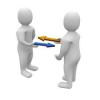
Breaking News
 BREAKING: Federal Agents Descend on Suspected Somali Fraud Sites in Minneapolis (VIDEO)
BREAKING: Federal Agents Descend on Suspected Somali Fraud Sites in Minneapolis (VIDEO)
 BREAKING: Federal Agents Descend on Suspected Somali Fraud Sites in Minneapolis (VIDEO)
BREAKING: Federal Agents Descend on Suspected Somali Fraud Sites in Minneapolis (VIDEO)
 Aargh! Letters of marque would unleash Blackbeard on the cartels
Aargh! Letters of marque would unleash Blackbeard on the cartels
 How a Barter System Could Sustain Communities During a Supply Chain Collapse
How a Barter System Could Sustain Communities During a Supply Chain Collapse
Top Tech News
 EngineAI T800: Born to Disrupt! #EngineAI #robotics #newtechnology #newproduct
EngineAI T800: Born to Disrupt! #EngineAI #robotics #newtechnology #newproduct
 This Silicon Anode Breakthrough Could Mark A Turning Point For EV Batteries [Update]
This Silicon Anode Breakthrough Could Mark A Turning Point For EV Batteries [Update]
 Travel gadget promises to dry and iron your clothes – totally hands-free
Travel gadget promises to dry and iron your clothes – totally hands-free
 Perfect Aircrete, Kitchen Ingredients.
Perfect Aircrete, Kitchen Ingredients.
 Futuristic pixel-raising display lets you feel what's onscreen
Futuristic pixel-raising display lets you feel what's onscreen
 Cutting-Edge Facility Generates Pure Water and Hydrogen Fuel from Seawater for Mere Pennies
Cutting-Edge Facility Generates Pure Water and Hydrogen Fuel from Seawater for Mere Pennies
 This tiny dev board is packed with features for ambitious makers
This tiny dev board is packed with features for ambitious makers
 Scientists Discover Gel to Regrow Tooth Enamel
Scientists Discover Gel to Regrow Tooth Enamel
 Vitamin C and Dandelion Root Killing Cancer Cells -- as Former CDC Director Calls for COVID-19...
Vitamin C and Dandelion Root Killing Cancer Cells -- as Former CDC Director Calls for COVID-19...
 Galactic Brain: US firm plans space-based data centers, power grid to challenge China
Galactic Brain: US firm plans space-based data centers, power grid to challenge China
Engineers develop metal tags that you can attach to common objects and turn them into ...

(Natural News) Turning an everyday object into a smart device is now as easy as slapping a metal tag on it. Capable of being produced by any 3D printer, the electronic tag hooks up the item to the Internet of Things, an article in Science Daily stated.
Dubbed "LiveTag," each unit is made up of substrate materials. The surface of the tag bears a 3D printed design made of copper foil that reflect WiFi signals from a router. When the user touches the tag, the reflected WiFi signals get disrupted. The interruption can be detected by a smartphone or similar WiFi receiver.
A LiveTag can be attached to anything. Its recipient is not required to be electronic; it could be a door or a wall or a bottle of water. An object tagged this way becomes a smart device that is connected to the Internet of Things. When it is being used, it will inform a watching WiFi device of the event. So you will know when someone, for example, is eating that tagged chocolate you explicitly forbade everyone else from touching. (Related: Terminator REBOOTING: Smart microchip can self-start and operate even when the battery runs out.)
3D printed tag can turn anything into a smart device
Furthermore, LiveTag can be printed as a slender keypad or a control panel for a smart home. When used this way, the tag can remotely control Internet of Things appliances through their WiFi connection.
"Our vision is to expand the Internet of Things to go beyond just connecting smartphones, smartwatches and other high-end devices," explained University of California San Diego (UCSD) researcher Xinyu Zhang, who wrote the research paper describing the new printable metal tag. "We're developing low-cost, battery-free, chipless, printable sensors that can include everyday objects as part of the Internet of Things."
Zhang explained that LiveTag is designed to reflect selected radio signals within the frequency range covered by WiFi. The signal can be altered by swapping out the copper for a different material and printing a new design on the substrate. Doing so allows the tag to reflect other signals, such as the ones given off by Bluetooth, cellular, and LTE emitters.



